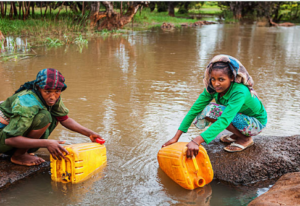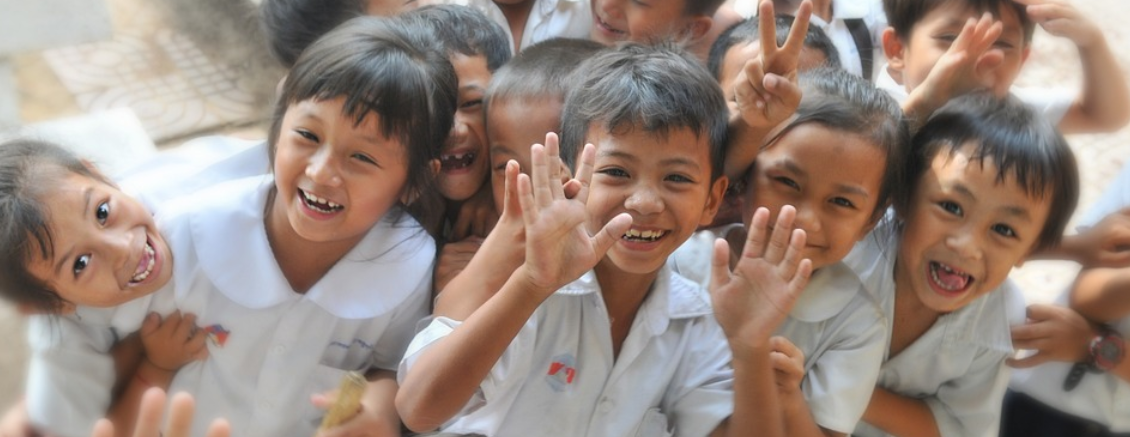An overview
Cholera is a bacterial illness which infects the intestines. It is ingested through contaminated water or food. The disease spreads where there is no clean water supply. Poor sanitation and dirty water are the perfect spawning grounds for the bacteria. Therefore, children who face life in slums and refugee camps, and people displaced by conflicts or natural disasters are most at risk. Over the past 15 years, the vast majority of cases were to be found in regions which had the worst water and sanitation services, if any.
Cholera is curable
While cholera is a very serious disease and can be fatal, especially to children under the age of five, those who are undernourished are particularly vulnerable to the most serious symptoms. This is certainly ironic but yes, cholera can be treated, cured and, with appropriate foresight, prevented in the first place. There are vaccines available.
Where Cholera strikes
Cholera thrives wherever there is abject poverty. The disease has become poverty’s bellwether, announcing the appalling toll which the illness continues to wreak on the poorest and most under resourced communities.
Those most at risk
People, particularly children, who live in unstable circumstances, who have been displaced from their homes or have inadequate basic services and resources. UNICEF estimates that 1.1 billion people are at risk, however many cases are not recorded at all. Officially, researchers suggest that there are over four million cases every year and approximately 150,000 cholera-related deaths. This makes the fatality rate about 4%.
UNICEF’s goal
UNICEF aims to significantly reduce the threat that cholera poses by 2030.
What makes a region cholera-endemic?
UNICEF defines this as any place where cases of the disease have been found for three consecutive years, implying local transmission. However, outbreaks can occur in any communities which have poor sanitation and dirty water supplies.
Climate change also adds to the threat of cholera. Unusually heavy rainfall and consequent flooding can overwhelm and disrupt normal water supplies and sanitation services. If families and communities have to rely on unsafe or tainted water, they are at much greater risk of exposure to water-borne illness.
Symptoms of cholera
Many infected people have few symptoms. Some have mild or even no symptoms at all. The most common are diarrhoea and dehydration. After initial infection, symptoms can appear any time between twelve hours to five days.
The link between poor sanitation and cholera
Cholera bacteria remain in human faeces for up to ten days. Unfortunately, wherever there is poor sanitation, the bacteria are recycled into the immediate environment which only compounds the problem and can result in further cases of infection.
Available treatments
UNICEF and other NGOs supply orally taken rehydration solutions (ORSs). The primary components are salt and sugar. They are powdered, light weight, distributed in sachets and easy to ingest, but they need to be dissolved in clean water, and therein lies another irony. To cure cholera people need clean water. Moreover, if children are severely dehydrated, they may need emergency medical care when fluids can be supplied intravenously alongside courses of antibiotics. Zinc is also an important trace element which helps to reduce the severity of the disease.
Available vaccines
There are three orally administered vaccines endorsed by the World Health Organisation (WHO), Dukoral, Shanchol and Euvichol-Plus. These need to be taken in two doses. The International Co-ordinating Group (ICG) stockpiles these vaccines and supplies them to areas where there are outbreaks. The ICG has overseen the administration of more than 100 million doses of these vaccines. Anyone who survives a bout of cholera acquires long lasting immunity to the disease.
Progress made in the fight against cholera
In the decade 2010-2019, total deaths from severe cases of diarrhoea among infant children fell by approximately 60%. Researchers point to the increased distribution of ORS formula treatments as a major reason for this dramatic change. Moreover, supplying clean water to communities also makes a huge difference. However, during the past three years, outbreaks have unfortunately been on the rise.
Danger zones
In 2022 there were cholera outbreaks in thirty countries. That amounted to a 145% rise on the previous five-year average. In the middle east, Syria and Lebanon reported cases for the first time in many years.
In south and east Africa, a cholera epidemic is ongoing. In January 2023, it was reported that Malawi was suffering its worst outbreak to date. Cholera has struck all 29 districts within the country and thousands of children have been infected.
During 2022 Haiti witnessed thousands of cases and hundreds of people died, among them many children. Infants account for 40% of cases. Community conditions in Haiti are still mired by the aftermath of the 2021 earthquake, a malnutrition crisis, political instability and clashes between armed militia gangs.
Action to help these people
UNICEF and other aid organisations are working with governments and others NGOs to help coordinate the distribution of water treatment tablets to ensure that water in vulnerable and affected communities is safe.
UNICEF and its partners are also supplying ORS sachets, zinc and antibiotics to local medical departments.
Moreover, local people are also receiving training to recognise and respond to symptoms of cholera, administer its treatment and to educate to help its prevention. Raising awareness through local media and schools is also important.
Forward planning
The top priority is to ensure that vulnerable communities and displaced refugees have access to clean, safe water and appropriate sanitation. A second priority is to make available the World Health Organisation’s oral vaccines. Likewise efficient and targeted supplies of ORSs, zinc supplements and antibiotics are essential. Local communities need to be empowered to look after their own wellbeing at the most basic level. For example, simple measures like handwashing, personal hygiene awareness including the safest possible disposal of human waste will also help to control the spread of the disease.
The statistical target
Prompt and formal treatment and educational campaigns should bring the fatality rate down from 4% to below 1%. Hand in hand with the efficient roll out of treatment is active and reactive monitoring for the disease. Accurate data relating to cholera need to be collected, collated and circulated at regional, national and local levels.
 Is the end of Cholera in sight?
Is the end of Cholera in sight?
It is always worthwhile to plough resources into eradicating a disease which is preventable (through vaccinations) and curable (through treatments). In 2021 UNICEF issued more than 93 million zinc tablets and over 30 million ORSs. However, in societies where everyday life is unstable because of natural disasters, forced migration, or conflict, outbreaks of cholera remain a deadly threat. For the time being, further humanitarian help is vital to control outbreaks of this disease.
UNICEF and its partners are reaffirming their commitment to tackle cholera so that by 2030 it is no longer a serious threat to vulnerable populations around the world, and especially the world’s poorest children. To that end, UNICEF is focussing on fifty countries where it considers the greatest risk lies.



